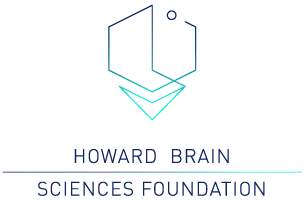June is Post-traumatic Stress Disorder (PTSD) Awareness Month, with June 27th being PTSD Awareness Day. PTSD “develops in some people who have experienced a shocking, scary, or dangerous event” (The National Institute of Mental Health Information Resource Center, 2019). While the body’s “fight-or-flight” response is a natural mechanism to protect oneself from harm, continuing to react as if there is a threat or having other difficulties adjusting to daily life may be a sign of PTSD (NIMH Resource Center, 2019). Statistics have shown, as of April 2020, estimating “the lifetime prevalence of PTSD ranges from 6.1 to 9.2 percent in national samples of the general adult population in the United States and Canada” (Sareen, 2020).

PTSD symptoms may begin as early as 3 months or years later following the traumatic incident (NIMH Resource Center, 2019). Symptoms must last more than a month and interfere with the quality of life to qualify for diagnosis (NIMH Resource Center, 2019). PTSD symptoms fall under the following categories, re-experiencing, avoidance, arousal and reactivity, and cognition and mood (NIMH Resource Center, 2019). Re-experiencing symptoms can be classified into experiences such as flashbacks, nightmares, and frightening thoughts (NIMH Resource Center, 2019). Examples of avoidance symptoms are staying away from reminders of the traumatic experience as well as avoiding thoughts or feelings about the event (NIMH Resource Center, 2019). Arousal and reactivity symptoms include being easily startled, feeling tense, difficulty sleeping, and experiencing angry outbursts (NIMH Resource Center, 2019). Lastly, cognition and mood symptoms include difficulty remembering key features of the traumatic event, negative thoughts about oneself or the world, distorted feelings, and anhedonia (NIMH Resource Center, 2019).
There can be many different types of events that lead to the development of PTSD. Risk factors for PTSD include living through dangerous events, injury, witnessing an injury or death, feelings of helplessness or extreme fear, childhood trauma, having little social support after a traumatic event, dealing with extreme stress after a traumatic event, and having a history of mental health issues and or substance abuse (NIMH Resource Center, 2019). Inversely, having support after a traumatic event and having positive coping strategies in place may help protect against developing PTSD (NIMH Resource Center, 2019). Common treatments for PTSD are combinations of medications and talk therapy, to treat both mood symptoms and address the underlying trauma (NIMH Resource Center, 2019).
Last week we introduced Trauma Interventions using Mindfulness Based Extinction and Re-consolidation of memories (TIMBER) and the research of Dr. Wainer, Dr. Pradhan and colleagues. TIMBER has been suggested for PTSD treatment both individually and in conjunction with ketamine treatment (Pradhan, D’Amico, Makani & Parikh, 2016). In the words of Dr. Pradhan, “the goal in TIMBER is to help bridge some of the existing treatment gaps in PTSD, treatment resistant depression (TRD), traumatic psychosis and addictive disorders”. TIMBER “offers a novel, evidence-based, and biomarker (D-serine)-informed mindfulness-based cognitive behavioral therapy (CBT) approach” (Pradhan, Pinninti & Rathod, 2019). TIMBER aims to target traumatic memories and uses a combination of techniques from Yoga practices and CBT (Pradhan, Pinninti & Rathod, 2019).
TIMBER begins with training on the standardized Yoga and meditation protocols (Pradhan, Pinninti & Rathod, 2019). This step builds the client’s ability to “observe the trauma symptoms and the life problems more neutrally or in a less reactive manner” (Pradhan, Pinninti & Rathod, 2019). Thus the client can engage with their traumatic memories, sensations, and impulsive behaviors without judgment and with mindful self-observation rather than “habitually indulging in them in a repetitive and emotionally charged manner” (Pradhan, Pinninti & Rathod, 2019).
The second step consists of mindfulness-based graded exposure therapy (MB-GET) (Pradhan, Pinninti & Rathod, 2019). This step consists of behavior analysis, constructing a trauma trigger list, and inducing the mindful state to then lead the client through exposure therapy based on the trauma trigger list (Pradhan, Pinninti & Rathod, 2019). This lessens hyperarousal (Pradhan, Pinninti & Rathod, 2019). Pradhan and colleagues articulate that “the act of consciously, purposefully, and calmly paying attention to the symptoms of trauma, their antecedents, and consequences” is responsive rather than reactive and builds towards memory extinction in the third step (Pradhan, Pinninti & Rathod, 2019).
Non-reactive cognitive reprocessing of the traumatic memories: is the final step of TIMBER. This step uses CBT like methodology to enable “cognitive restructuring, reformulation, and reappraisal” of the traumatic memories (Pradhan, Pinninti & Rathod, 2019). This gives the memories new meanings and re-writes over the traumatic association (Pradhan, Pinninti & Rathod, 2019).
Over the course of June, we will be further reviewing TIMBER and Dr. Pradhan and colleagues’ use of TIMBER in conjunction with ketamine treatment. For those in need of resources, HBSF’s patient advocacy team can be reached at patientadvocacy@brainsciences.org.
References
Brody, B. (2018). What Is Anhedonia? Retrieved 3 June 2020, from https://www.webmd.com/depression/what-is-anhedonia
Pradhan, B., K., D’Amico, J., Makani, R., & Parikh, T. (2016). Nonconventional interventions for chronic post-traumatic stress disorder: Ketamine, repetitive trans-cranial magnetic stimulation (Rtms), and alternative approaches. Journal of Trauma & Dissociation, 17(1), 35–54. https://doi.org/10.1080/15299732.2015.1046101
Pradhan, B., Pinninti, N. R., & Rathod, S. (2019). Timber psychotherapy: For ptsd, depression and traumatic psychosis. Springer International Publishing. https://doi.org/10.1007/978-3-030-20648-2
Sareen, J. (2020). Posttraumatic stress disorder in adults: Epidemiology, pathophysiology, clinical manifestations, course, assessment, and diagnosis. https://www.uptodate.com/contents/posttraumatic-stress-disorder-in-adults-epidemiology-pathophysiology-clinical-manifestations-course-assessment-and-diagnosis
The National Institute of Mental Health Information Resource Center. (2019). Nimh » post-traumatic stress disorder. https://www.nimh.nih.gov/health/topics/post-traumatic-stress-disorder-ptsd/index.shtml
